Inductively Coupled Plasma(ICP)
Atomic/optical emission spectroscopy(ICP-AES/OES),
MASS Spectrometers(ICP-MS).
https://en.wikipedia.org/wiki/Inductively_coupled_plasma |
|
An inductively
coupled plasma (ICP)
or transformer
coupled plasma (TCP)[1] is a type of plasma source in which the energy is supplied by electric currents which are produced by electromagnetic
induction,
that is, by time-varying magnetic fields.[2].
Plasma electron temperatures can range between ~6 000 K and ~10 000
K (~6 eV - ~100 eV),[4]comparable to
the surface of the sun. ICP discharges are of relatively high electron density,
on the order of 1015 cm−3. As a result, ICP discharges have wide applications where
a high-density plasma (HDP) is needed.
·
ICP-AES, a type of atomic emission spectroscopy.
·
ICP-MS, a type of mass spectrometry.
·
ICP-RIE, a type of reactive-ion etching.
·
Exciting a beam of noble gas to the metastable state.[5]
Another benefit of ICP discharges is that they are relatively free of
contamination because the electrodes are completely outside the reaction
chamber. By contrast, in a capacitively
coupled plasma (CCP), the
electrodes are often placed inside the reactor and are thus exposed to the
plasma and subsequent reactive chemical species.
|

Picture of an analytical ICP torch

High performance optical system |
|
|
Applications :
Examples of the application of ICP-AES include the determination of metals in
wine,[4] arsenic in
food,[5] and trace
elements bound to proteins.[6]
ICP-OES is widely used in minerals processing to provide the data on grades of
various streams, for the construction of mass balances.
In 2008, the technique was used at Liverpool University to demonstrate that a Chi Rho amulet found in Shepton Mallet and previously believed to be among
the earliest evidence of Christianity in England,[7] only dated to
the nineteenth century.[8][9][10]
ICP-AES is often used for analysis of trace elements in soil, and it is for that
reason it is often used in forensics to ascertain the origin of soil samples
found at crime scenes or on victims etc. Taking one sample from a control and
determining the metal composition and taking the sample obtained from evidence
and determine that metal composition allows a comparison to be made. While soil
evidence may not stand alone in court it certainly strengthens other evidence.
It is also fast becoming the analytical method of choice for the determination
of nutrient levels in agricultural soils. This information is then used to
calculate the amount of fertiliser required to maximise crop yield and quality.
ICP-AES is used for motor oil analysis. Analyzing used motor oil
reveals a great deal about how the engine is operating. Parts that wear in the
engine will deposit traces in the oil which can be detected with ICP-AES.
ICP-AES analysis can help to determine whether parts are failing. In addition,
ICP-AES can determine what amount of certain oil additives remain and therefore
indicate how much service life the oil has remaining. Oil analysis is often used
by fleet manager or automotive enthusiasts who have an interest in finding out
as much about their engine's operation as possible. ICP-AES is also used during
the production of motor oils (and other lubricating oils) for quality control
and compliance with production and industry specifications.
|
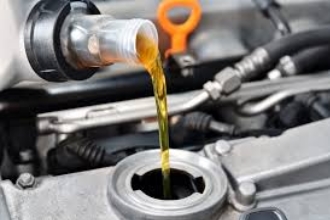
|

|
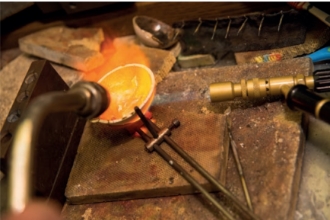
|
Inductively coupled plasma mass
spectrometry
https://en.wikipedia.org/wiki/Inductively_coupled_plasma_mass_spectrometry

|
Inductively coupled plasma mass spectrometry (ICP-MS) is a type of mass spectrometry which is capable of detecting metals and several non-metals at concentrations as low as one part
in 1015(part per quadrillion, ppq) on non-interfered
low-background isotopes. This is achieved by ionizing the sample with inductively
coupled plasma and then using a mass spectrometer to separate and quantify those ions.
Compared to atomic
absorption spectroscopy, ICP-MS has greater speed, precision, and
sensitivity. However, compared with other types of mass spectrometry, such as thermal
ionization mass spectrometry (TIMS)
and glow discharge mass spectrometry (GD-MS), ICP-MS introduces many interfering
species: argon from the plasma, component gases of air that leak through the
cone orifices, and contamination from glassware and the cones.
The variety of applications exceeds that of inductively coupled plasma atomic emission
spectroscopy and includes isotopic speciation.[citation
needed] Due to possible applications in nuclear technologies,
ICP-MS hardware is a subject for special exporting regulations.
|
Applications

|
One of the largest volume uses for ICP-MS is in the medical and forensic field,
specifically, toxicology.[citation
needed] A physician may order a metal assay
for a number of reasons, such as suspicion of heavy metal poisoning, metabolic
concerns, and even hepatological issues. Depending on the specific parameters
unique to each patient's diagnostic plan, samples collected for analysis can
range from whole blood, urine, plasma, serum, to even packed red blood cells.
Another primary use for this instrument lies in the environmental field. Such
applications include water testing for municipalities or private individuals all
the way to soil, water and other material analysis for industrial purposes. In
the forensic field, glass ICP-MS is popular for glass analysis.[citation
needed] Trace elements on glass can be
detected using the LA-ICP-MS. The trace elements from the glass can be used to
match a sample found at the crime scene to a suspect. |

|

|
In recent years, industrial and biological monitoring has presented another
major need for metal analysis via ICP-MS. Individuals working in plants where
exposure to metals is likely and unavoidable, such as a battery factory, are
required by their employer to have their blood or urine analyzed for metal
toxicity on a regular basis. This monitoring has become a mandatory practice
implemented by OSHA,
in an effort to protect workers from their work environment and ensure proper
rotation of work duties (i.e. rotating employees from a high exposure position
to a low exposure position).
11 Signs You Have Heavy Metal Toxicity & How To Prevent It :
http://www.naturallivingideas.com/heavy-metal-toxicity-signs/
|
|
ICP-MS is also used widely in the geochemistry field for radiometric dating, in
which it is used to analyze relative abundance of different isotopes, in
particular uranium and lead. ICP-MS is more suitable for this application than
the previously used thermal
ionization mass spectrometry,
as species with high ionization energy such
as osmium and tungsten can
be easily ionized. For high precision ratio work, multiple collector instruments
are normally used to reduce the effect noise on the calculated ratios. |

|

|
In the field of flow cytometry,
a new technique uses ICP-MS to replace the traditional fluorochromes.
Briefly, instead of labelling antibodies (or
other biological probes) with fluorochromes, each antibody is labelled with a
distinct combinations of lanthanides.
When the sample of interest is analysed by ICP-MS in a specialised flow
cytometer, each antibody can be identified and quantitated by virtue of a
distinct ICP "footprint". In theory, hundreds of different biological probes can
thus be analysed in an individual cell, at a rate of ca. 1,000 cells per second.
Because elements are easily distinguished in ICP-MS, the problem of compensation
in multiplex flow cytometry is effectively eliminated. |
|
In the pharmaceutical industry, ICP-MS is used for detecting inorganic
impurities in pharmaceuticals and
their ingredients. New and reduced maximum permitted exposure levels of heavy
metals form dietary supplements, introduced in USP (United States
Pharmacopeia)
<232>Elemental Impurities—Limits [1] and
USP <233> Elemental Impurities—Procedures,[2] will
increase the need for ICP-MS technology, where, previously, other analytic
methods have been sufficient. |

|
Quantification of proteins and biomolecules
In 2007, a new type of protein tagging reagents called metal-coded
affinity tags (MeCAT)
were introduced to label proteins quantitatively with metals, especially
lanthanides.[3] The
MeCAT labelling allows relative and absolute quantification of all kind of
proteins or other biomolecules like peptides. MeCAT comprises a site-specific
biomolecule tagging group with at least a strong chelate group which binds
metals. The MeCAT labelled proteins can be accurately quantified by ICP-MS down
to low attomol amount of analyte which is at least 2–3 orders of magnitude more
sensitive than other mass spectrometry based quantification methods. By
introducing several MeCAT labels to a biomolecule and further optimization of
LC-ICP-MS detection limits in the zeptomol range
are within the realm of possibility. |
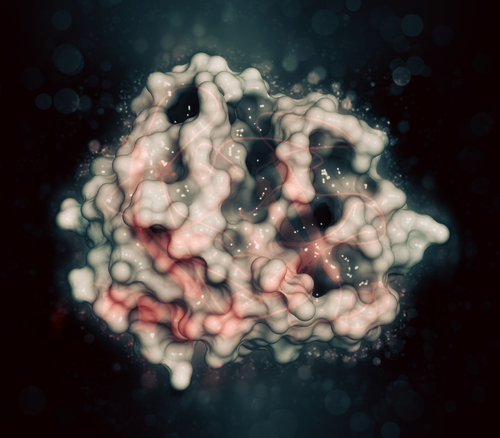
|
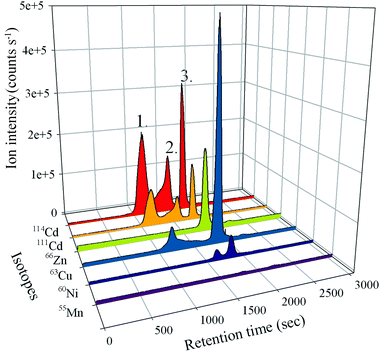
|
Elemental analysis
The ICP-MS allows determination of elements with atomic mass ranges 7 to 250 (Li to U), and sometimes higher. Some
masses are prohibited such as 40 due to the abundance of argon in the sample.
Other blocked regions may include mass 80 (due to the argon dimer), and mass 56
(due to ArO), the latter of which greatly hinders Fe analysis unless the instrumentation is
fitted with a reaction chamber. Such interferences can be reduced by using a
high resolution ICP-MS (HR-ICP-MS) which uses two or more slits to constrict the
beam and distinguish between nearby peaks. This comes at the cost of
sensitivity. For example, distinguishing iron from argon requires a resolving
power of about 10,000, which may reduce the iron sensitivity by around 99%.
A single collector ICP-MS may use a multiplier in pulse counting mode to amplify
very low signals, an attenuation grid or a multiplier in analogue mode to detect
medium signals, and a Faraday cup/bucket to detect larger signals. A
multi-collector ICP-MS may have more than one of any of these, normally Faraday
buckets which are much less expensive. With this combination, a dynamic range of
12 orders of magnitude, from 1 ppq to 100 ppm is possible.
|
ICP-OES Spectrometers Key
Features:

Efficiency and Cost :
-
Powerful and cost effective alternative to
sequential ICP and FAA spectrometers.
-
Simultaneous spectrum capture in the 175-770
nm wavelength range - more than twice the sample throughput compared to
sequential instruments when more than 10 elements are analyzed.
-
Low operating cost - optical system requires
only 0.5 L/min purge gas while still offering superb analytical performance in
the UV spectral range.
-
Factory methods can be provided for standard
applications - "Plug and Analyze" without the need for method development.
-
Most accurate results and highest
sensitivity thanks to superior UV performance and constant resolution.
-
Faster out of the gate: less than 10 minutes
warmup time (previously over 30) with the new LDMOS generator.
-
Axial or radial plasma observation.
Power Source:
-
Next generation
plasma power, Laterally Difussed Metal Oxide Semiconductor (LDMOS) generator,
delivers up to 2000W.
-
High power gives great matrix compability at highest plasma loads previously
impossible.
-
Can actually analyze volatile organic samples such as gasoline at room
temperature !
-
Sample can be analyzed in lower dilutions, for lower limit of detection.
-
Extremely robust and trouble free, with advanced design that is completely
short-cut-proof.
-
Air-cool system without external cooling, delivering low running costs.
-
Have no parts subject to wear - minimizing time and expanse.
-
Stablilize much more quickly in less than 10 minutes, ready to start most
measurements.
Excitation System:
-
Free-running generator with a frequency of
27.12 MHz, 0.7-2.0kW power output utilized.
-
For constant plasma power independent from
plasma load.
-
Perfectly suited for volatile organics and
high dissolved solids.
-
Includes automatic plasma ignition.
-
Energy and argon-saving standby mode.
-
Independently adjusts the resonance
frequency, holding the effective plasma power constant over a wide range of
sample loads - Characterized by its robustness, reliability and stability.
Sample Introduction System:
-
Extremely short fluid paths ensure short
measurement and flush times.
-
Thermally insulated illuminated compartment
provides plenty of room to accommodate a large variety of sample introduction
system.
-
Preadjusted setup makes for rapid startup,
without the need for comprehensive optimization.
-
Maintenance friendly sample introduction
system.
Plasma Interface:
-
Radial (SOP) or Axial (EOP) plasma
observation.
-
Radial observation
- Less sensitive to high matrix concentrations and the
influences from organic matrices.
- Smaller observation volume for major elements high
precision determinations applications.
-
Axial observation:
- Evaluates
the entire emission zone, facilitating the analysis of trace contents.
- OPI (Optical Plasma Interface), a bayonet connection
simplifies the use.
- Usually 10 times better detection limits without the
matrix interferences than other axial observation.
- Over 10 years proven.
Optical System:
-
Optimized
Rowland Circle Alignment(ORCA).
-
Covers the entire relevant wavelength range
from 175 to 777 nm.
-
Aluminum hollow section Design quarantees
high thermo stability measurement results.
-
Small optic volume guarantees short start up
times and a purge rate of less than l/min for measurements in the UV range (<200
nm), purged with Argon - optionally Nitrogen.
-
Line-rich spectra can be more easily
processed.
-
Delivers 8 picometers(pm) resolution in the
important range of 165nm-285nm.
-
Delivers 16 picometers(pm) resolution in
higher wavelengths.
-
A twin-interface version enables automatic
axial and radial observations.
Permanently Argon-filled optical chamber:
-
UV gas purification system: Argon
circulation and cleaning system for sealed optical chamber.
-
Recirculating gas througth a small cleaning
catridge,good for 2 years of life.
-
Eliminates waste and
expense than conventional constant purge gas comsuming
(typically more than S3000 per year that also may risks
system comtamination).
-
Helps achieve high stability and excellent
low wavelength performance.
-
Provides stable analytical results
immediately without purge delay and startup.
ICAL Logic System(Intelligent Calibration
Logic):
-
Continuously monitors the optical system and
normalizes the wavelength scale.
-
Calls for an
ICALization (measurement of the ICAL standard) if changes are noticed.
-
Carried out by the control logic if the
instrument is in automatic operation mode.
-
Methods can be easily
transferred among instruments, great for multiple systems of the same type
running.
-
Methods for numerous
and widely varying applications can be developed and offered as factory methods.
Readout System:
-
Linear CCD arrays.
-
Up to 8 orders of
magnitude large dynamic range detectors.
-
Possible to process concentrations from ppb
% range without blooming effects.
-
High speed readout
system, parallelled digital signal processor units.
-
Recording and evaluation of the complete
spectrum in less than 3 seconds.
Cooling system:
-
No complicated, costely external colloing.
-
No water chiller
necessary, saving thousands while eliminating chiller breakdown risk.
-
No optic purge gas required, saves thousands
per year.
-
The only known
completely air-cooled ICP-OES analyzer, the unique innovative OPI-AIR interface.
-
Saves users from
having to buy, install, power, and maintain an elaborate expensive, and often short-lived external cooling system.
Software:
-
Offers theuser clear, structured and easy to
understand control of all instrument functions.
-
Consists of six main
modules for manual, automatic and transient measurements, spectra viewing,
method development and general configuration.
-
1-click routine operation and assistants for
the less frequently used options are available.
-
Even analytical
method creation is simplified vai intelligent assistants/wizards, default
settings, and predefined templates.
-
With dockable windows
and tool bars, the user interface can be customized to specific information
requirements and personal preferences.
-
All of the
measurement parameters, e.g., element and line selection can be edited and
changed as required.
-
Provide easiest
possible operation, offering manual, prompteed manual, or fully automatic
analysis, for personnel with minimal training.
-
Fully compatible with
US EPA, CLP as well as other standards and methods and includes an US FDA 21 CFR
Part 11 compliant user and data management.
Factory Calibrated Methods for wear metal in
oil:
-
Availiable with a
complete factory calibrated method set, ready with no need for initial method
development.
-
Swiftly and
accurately assesses component wear trends, detecting additives, wear elements
and contaminants.
-
Industrial-grade
durability, and surpringly affordable to purchase and operate.
Ergonomic:
-
Moderized ergonomic
design fits on any standard laboratory bench.
-
Polyurethane/aluminum
construction resistant to chemicals and corrosion.
-
Include thoughtful
layout features, as ultra-short fluid paths.
-
Easy, safe
accessibility to components from both sides and front.
-
For fast, convienient service or For fast, convienient service or
maintenance.
More ICP-OES Spectrometers Key Features .....
ICP-MS Spectrometers Key Features:
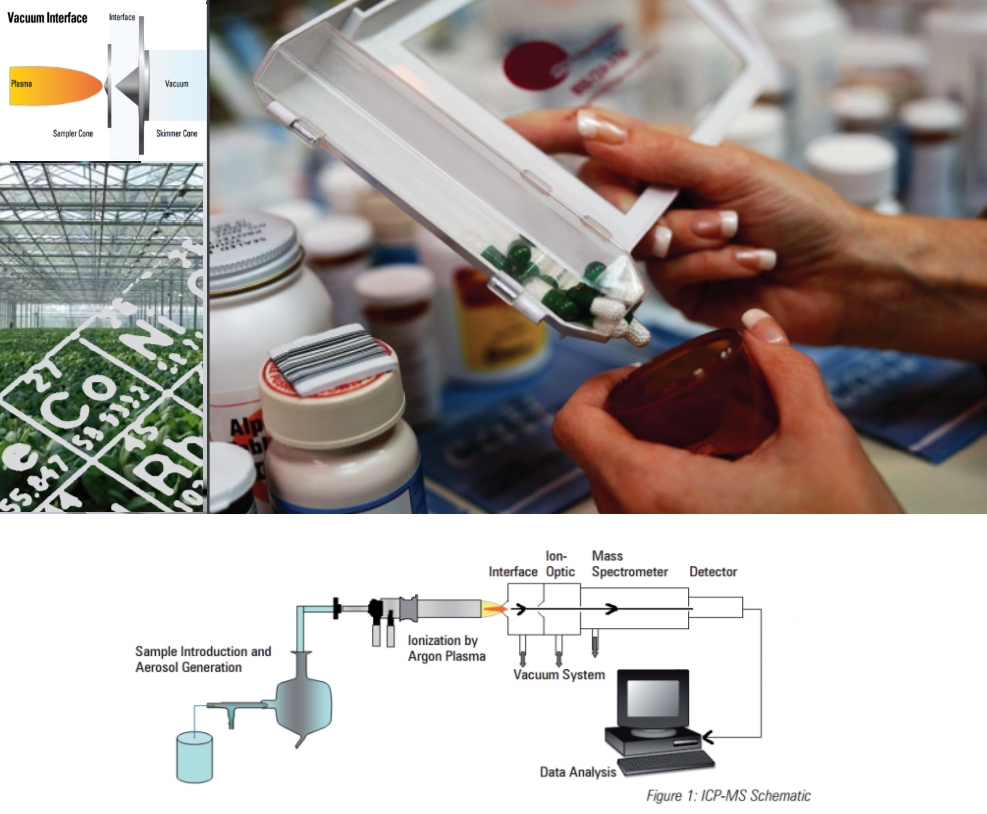
-
Robust dry vacuum system and
zero-maintenance, free-running, generator.
-
Sample chamber can be accessed by sliding
the front cover to the side.
-
Rapid exchange of the entire sample
introduction system or its individual components.
-
Virtually every combination of nebulizer and
spray chamber is possible.
-
Easily developed by attaching
chromatographs, ultrasonic nebulizers or laser ablation systems.
-
Double-focusing sector field ICP-MS based on
a Mattauch-Herzog geometry with a newly developed ion optic and pioneering
detector technology.
-
With a permanent ion beam going to the
detector.
-
ICAL system logic for continuous optimal
operation.
-
Capable of simultaneously measuring the
complete mass range used for inorganic mass spectrometry from 6Li to 238U.
-
Storage of the data for the complete mass
spectrum enables unprecedented flexibility regarding method development and
reprosessing.
-
Possible to later determine elements in a
sample even when the sample no longer exists.
-
First ICP-MS with simultaneously element
contents and isotope ratio analysis in the entire mass range from Li to U.
-
Rapid fingerprinting, real-time internal
standardization and measurement of transient signals, isotope ratios and isotope
dilution
-
Clearly better precision for development of
new application areas.
-
Leading in productivity and profitability
with high sample throughput rate.
-
Sets new standards for fully simultaneous
analysis, simple operation and highest reliability.
-
Tremendous ion detector readout that
achieves excellent detection limits, precision and accuracy.
-
Compatible with EPA, FDA, CLP and 21 CFR
Part 11 as well as other standards and guidelines.
More ICP-MS Spectrometers Key Features .....
ICP-OES Spectrometers Application Report List:
*** Please login to request anapplication report
ICP-MS Spectrometers Application Report List:
*** Please login to request anapplication report
|